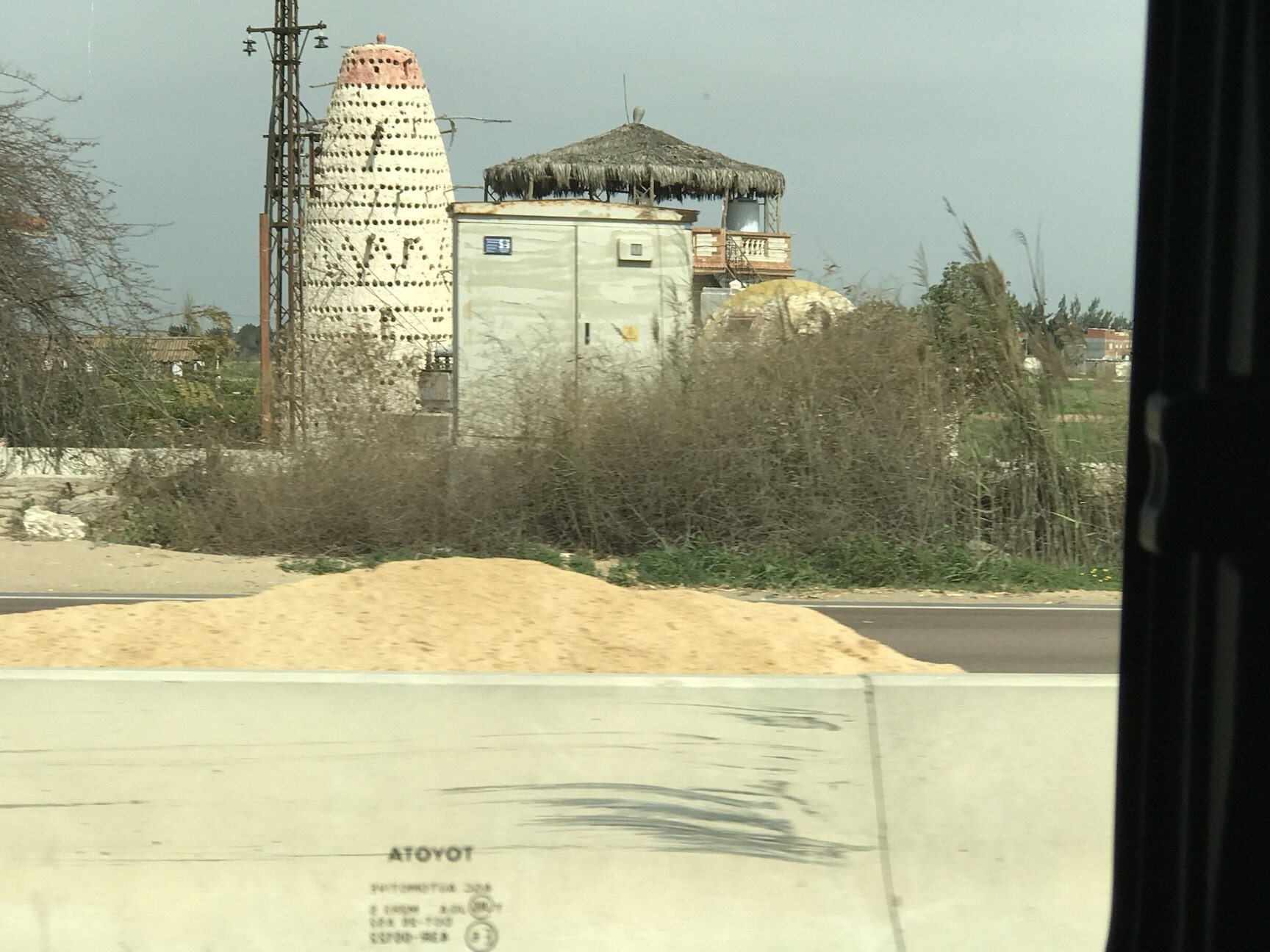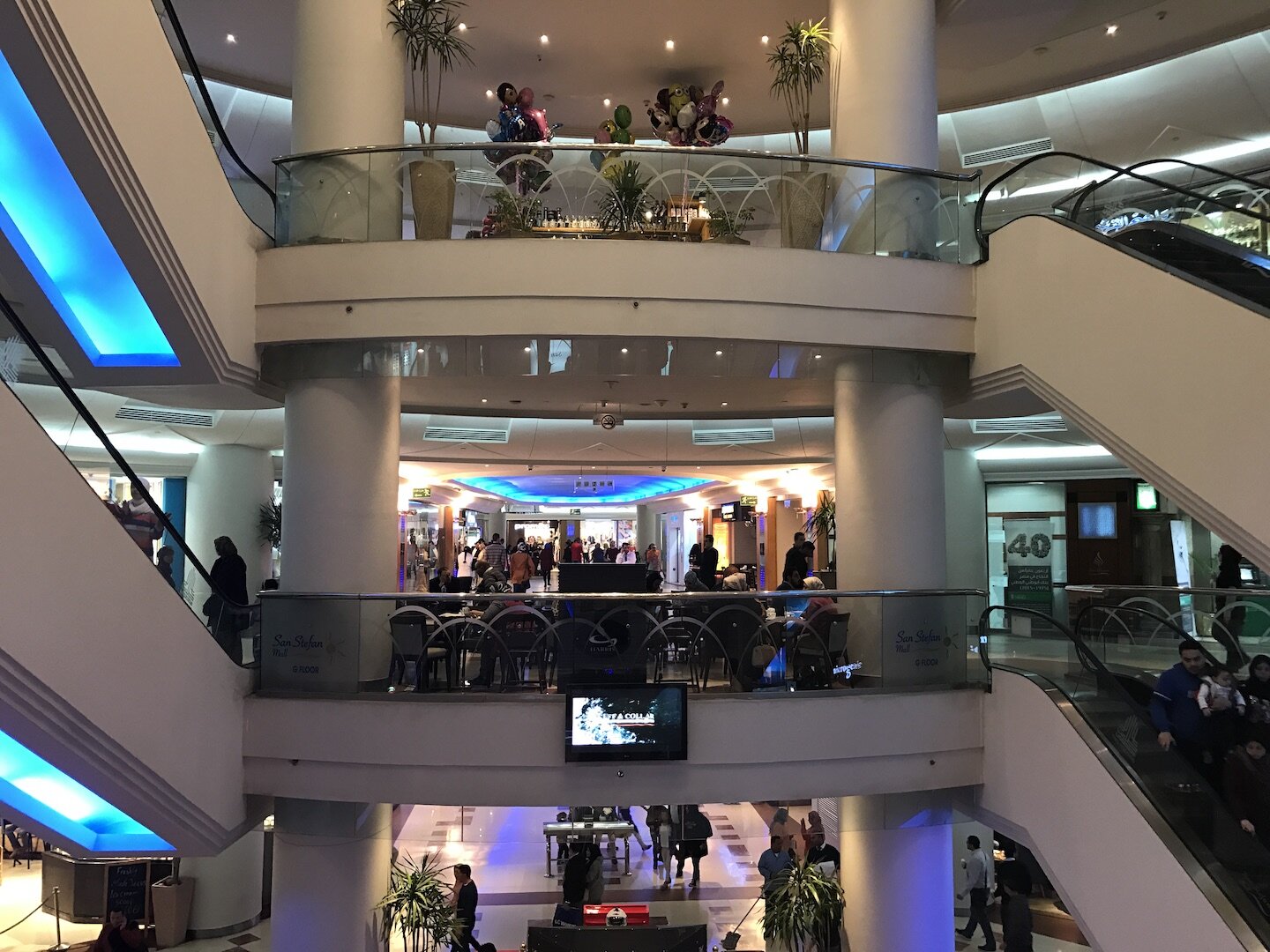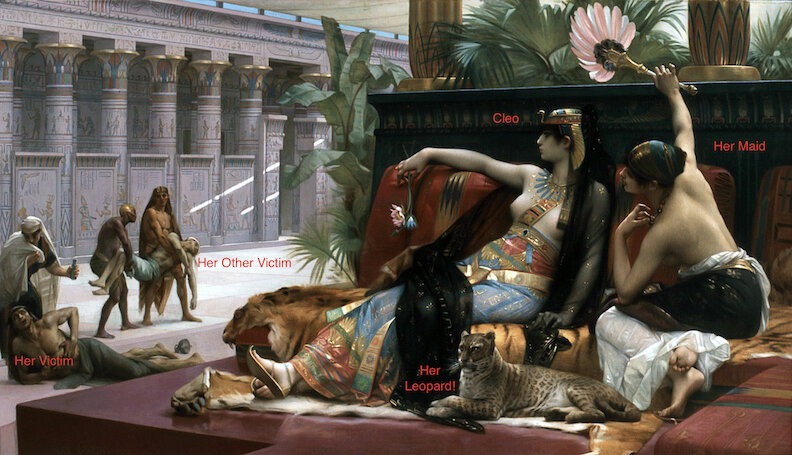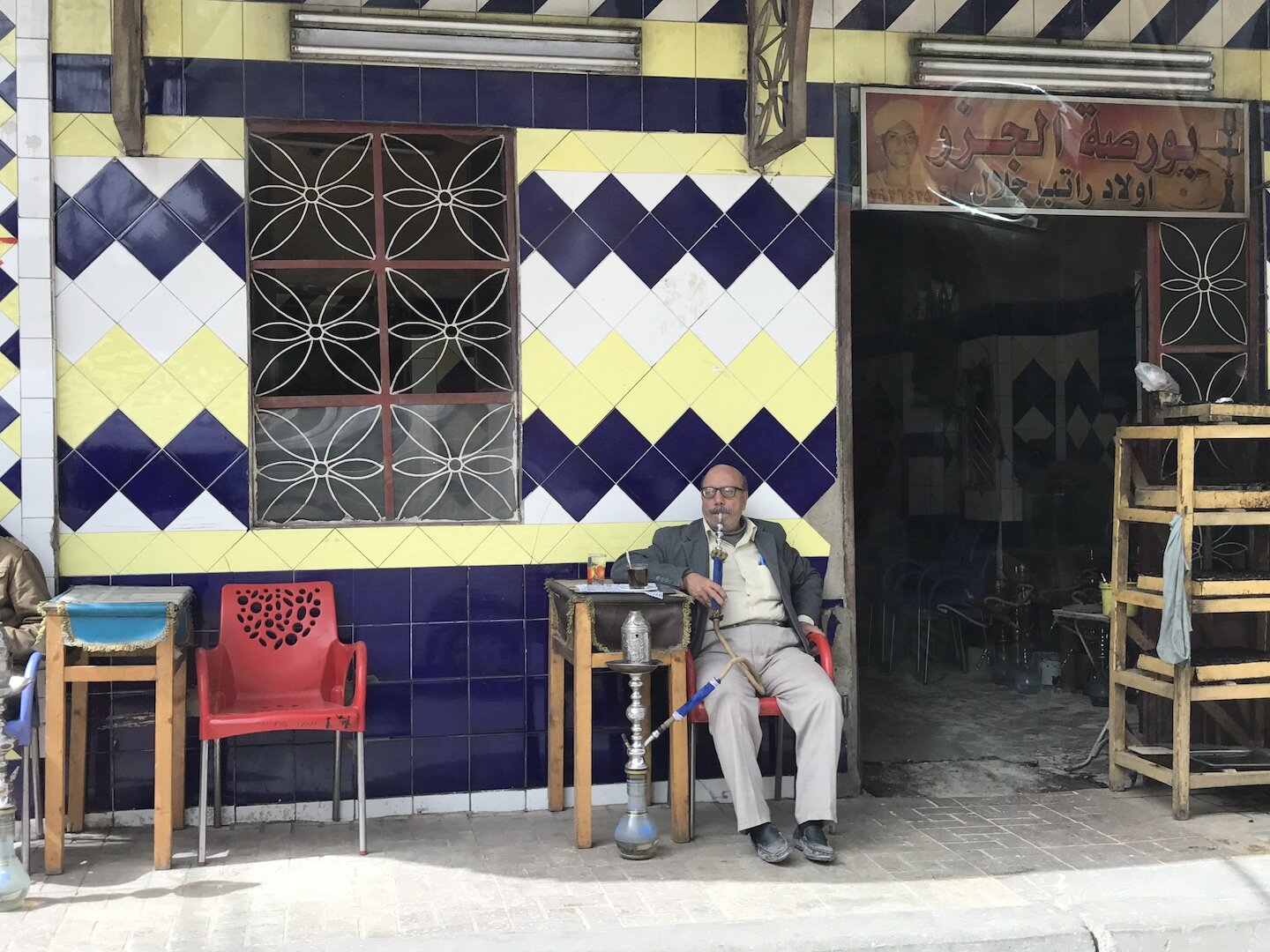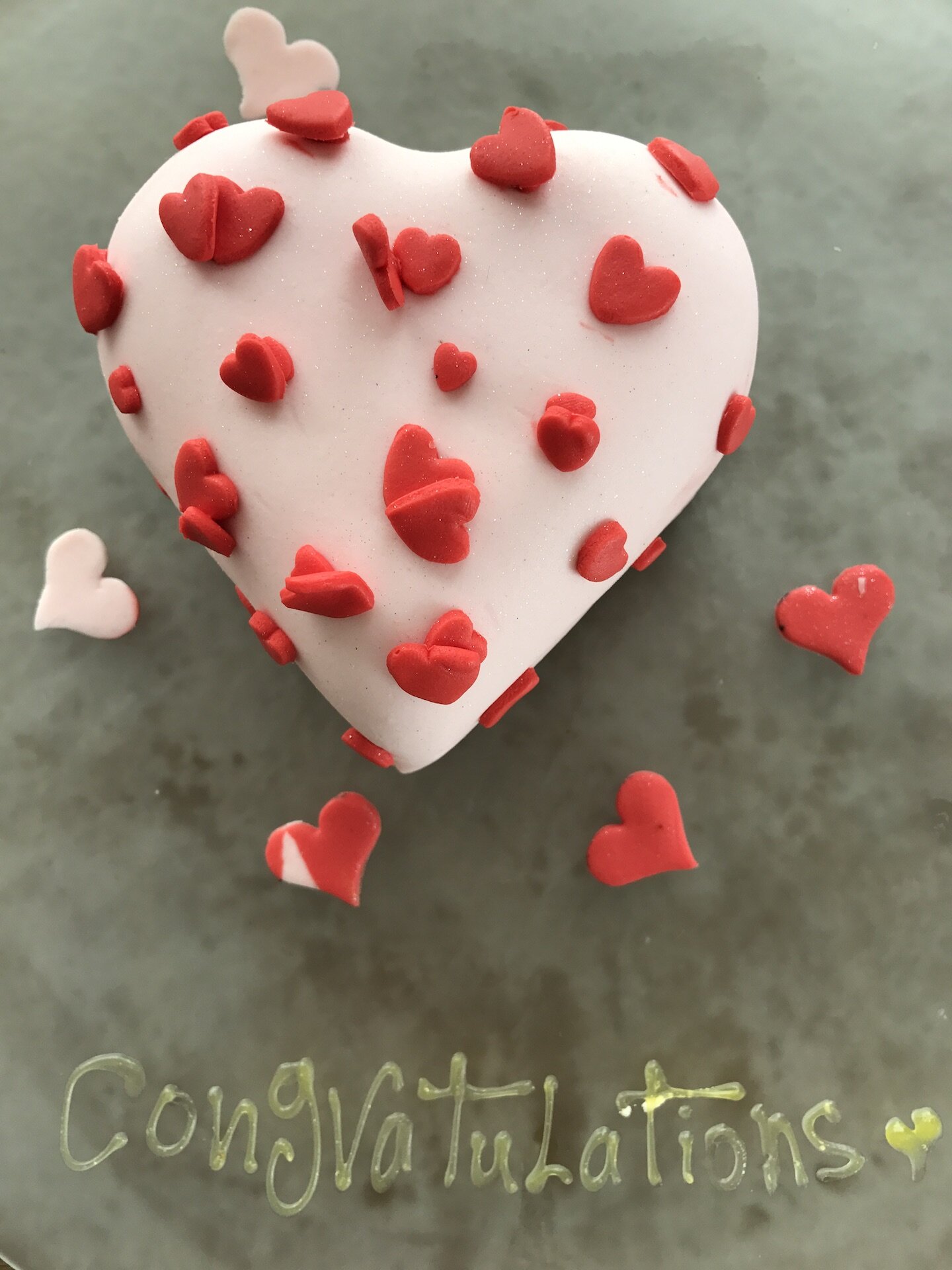[Visited in March 2017]
When I first met A., 21 years ago today, we spent the early days of our courtship on the phone. I met him in LA, the night before he returned home to SF, before flying onward to Amsterdam. For the next 3 weeks we communicated through time differences, the internet and the telephone. He had just left his high-powered job, started his own company and was traveling to board positions around the world. During that time we talked about life, travel, music and books. He mentioned the impact ‘The Alexandria Quartet’ had on him when he was young, so I went to Skylight books in Los Feliz and bought it. In the first few pages there were so many words I had never heard of (phthisic?, aniline?, pegamoid?) So I needed a dictionary to understand what I was reading. ‘The Quartet’ is four books told from four points of view, about the same series of events. It was considered a ‘modern love story’ set in 1940s Egypt, and was Lawrence Durrells’ love letter to the city. We were excited, after 17 years, to finally visit Alexandria, and decided to save this glamorous and romantic experience for our Anniversary, and our final destination in Egypt.
Alexandria! our last stop, upper left.
Egyptian Pigeon Towers (Dovecotes) photographed on the way to Alexandria. Pigeon are raised as part of the Egyptian diet and their droppings are used as fertilizer.
Four Seasons Alexandria at San Stefano
We flew from Aswan to Cairo and were driven 2.5 hours to Alexandria. The food and beverage manager from our Nile cruise recommended a place to stop for the best Fetterai, made in a clay oven, on the way to Alexandria. Unfortunately our driver didn’t know the location, so I didn’t pursue it. To be honest, I may have been suffering Fetterai fatigue.
When we booked our stay at the Four Seasons, I tried to find something special that we could do that evening to celebrate our then, seventeen years together. I looked at the restaurants on the hotel website and found the only option: A Sparkling Evening at the Royal Jewelry Museum. I imagined a table for two, surrounded by a magnificent collection of twinkling gemstones reflecting the candlelight. An anniversary dinner in a Royal Villa would be perfect.
An Egyptian Queen whose diamonds obviously do NOT make her happy! (borrowed from the internet)
I asked the hotel to reserve the evening of March 9th. They responded with the cost and a description of the experience. We would arrive in a private limo (it’s a five minute drive but, okay) and start with a private tour of the museum with a signature cocktail in hand (great) followed by a five course set-menu. Knowing how A. feels about multiple-course, multiple hour dinners, this would be a hard sell. Dinner included a bottle of Champagne (not really our drink of choice), a violin or guitar serenade during the meal (cheesy and annoying) and the entire evening would be memorialized by a private photographer (intrusive!). Assuming the price was in Egyptian Pounds (7000EGP = $450USD) it seemed totally reasonable, but the hotel corrected my assumption, the package was $7,000 dollars. I considered it for half a second, then came to my senses. A $7,000 dinner? We decided to be spontaneous instead.
Treats in the living room.
Bathroom with Matisse and Picasso prints.
Anniversary wishes…
We happened onto a ‘typical’ Egyptian cafe on the way to the mall.
A mall is a mall is a mall. - G.S.
If I lived in Alexandria, this would be my market.
Spices by the Kilo!
Sunset over Alexandria
A Tour of Alexandria
Alexandria was founded by Alexander the Great in 332 BC and was the capital of Egypt for almost 1000 years, until the death of Cleopatra VII. Alexander wanted to build a large Greek City in Egypt and chose this harbor location on the Mediterranean. It was the largest city in the world until Rome was built. Alexander left a few months after founding Alexandria and was poisoned in Babylon 10 years later, never to return to Egypt alive. His loyal Greek General Ptolemy I brought his body back to Egypt and became his successor.
The Ptolemaic dynasty ruled for 300 years and its most iconic descendant and heir to the throne was the 18 year-old Cleopatra VII. She was to rule in tandem with her brother, Ptolemy XIII. Cleopatra was intelligent, spoke 9 languages, was politically savvy, attractive, wealthy and a master of pageantry. She ruled for 21 years and married two of her brothers. She and her first brother, Ptolemy XIII, had a civil war, which forced Cleopatra to leave Alexandria. She camped out in Roman Syria, as she plotted and put together an army to return to war with her brother. Once she arrived back to Alexandria she fought Ptolemy XIII and quickly seduced a recently arrived Caesar, the Emperor of Rome. Caesar also went on to war with Ptolemy XIII, who ultimately ended up drowned from a cap-sized boat on the Nile. Cleopatra then married and ruled with her second brother, Ptolemy XIV, who she later poisoned. She had one son with Caesar, who was later assassinated.
A woman with a penchant for poison. Cleopatre, by Alexandre Cabanel (borrowed from the internet)
Cleopatra then seduced Caesars’ successor in Roman power, Mark Anthony. Together their historic and legendary love affair lasted more than 10 years. They traversed Rome, Egypt and Syria, and produced 3 children. Finally, in 31 BC, Anthony’s men surrendered to Octavian in Alexandria. Cleopatra sent word to Mark Anthony that she had killed herself, and so a distraught Mark Anthony proceeded to stab himself by falling on his sword. As he was dying his men took him to a still alive Cleopatra. He urged her to pacify Octavian. Rather than submit to Octavian and be taken to Rome, Cleopatra poisoned herself and her ladies in waiting. It was said that she used a type of Cobra - the Egyptian Asp. Later studies suggest she may have used a needle filled with opium. She was very interested in poison, and had tested various plant and animal venoms on her people. She was curious about their strength, the dose needed, and the amount of suffering each poison would cause. Was her experimentation on others ultimately in preparation for her own suicide? So when it was her time, she would know exactly what she needed to take and how much?
Octavian respected Cleopatras last wish and allowed she and Mark Anthony to be buried together in her tomb, which has yet to be found. When the name Cleopatra comes up, every Egyptian will remind you that Cleopatra was in fact not Egyptian, she was Greek.
Catacombs - Kom el Shoqafa
An illustration of things to come.
The catacombs are the largest Greco-Roman burial site in Egypt. They were discovered in 1900 when a donkey cart fell into a hole. The catacombs are three levels deep, the lowest of which is still submerged in water. Because the water table is rising, Alexandria is sinking, so they are constantly pumping water. The second level was opened publicly in 1995. The catacombs started with tombs and eventually became a public cemetery.
Underground Tomb
Kom el Shoqafa means pile of shards which refers to the pottery left behind after a funeral banquet. The Triclinium area is where the wake happens, and where the family came to visit and celebrate the dead with a feast. They brought their food in pottery, (this was before the advent of Tupperware), and afterwards they would break it into shards of terracotta.
Shards of Pottery
There are stairs leading down into the rotunda, and a pulley system to lower the coffins using ropes. There is a male and female burial chamber and an area inside with stone burial niches for coffins, called Loculi. Wiki-lamps were used in the tombs, and they would salt the wax so it wouldn’t create black smoke. During the Roman period, even Romans were mummified and buried in family tombs without any jewelry or valuables, including their children. The ancient grave robbers were probably very disappointed. Children were buried separately because they do not experience a day of judgement.
Hook for the pully system to lower the coffins.
Entrance to tombs - Images of Medusa (Center, also greek) were used to protect the tombs because of the legend has it if she looks you in the eye, she can turn you to stone.
Roman Amphitheater - Kom el Dikka
In 1960 the government bought houses in a central area of Alexandria where they planned to build a new Palace. As they were preparing to break ground they discovered a Roman amphitheater. It’s the only one in Egypt. The Romans used it as an open air theatre for musicals, the Byzantines as a conference hall, and it was eventually neglected by the Islamic community. Kom el Dikka means mound of rubble.
Roman Ampitheater
In this same complex they found a cistern, baths, private homes, and an ‘Auditoria’ with lecture halls, benches and lecterns. The baths consisted of brick-built hot steam baths and a Frigidarium for cold bathing. Because of the great earthquake, most of the area except the Amphitheater and the Villa of the Birds is still a rubbly work in progress.
The dark brick baths surrounded by office buildings.
Close up of a mosaic in the Villa of the Birds.
Mosaic bird carpet
Mosaic panther carpet
On the way to the library, we drove through the city and got a cars-eye-view of its wide streets, European-style buildings and the people and their traffic.
A seat with a view
This bus/tram system reminds me of San Francisco
Corner building with ballerinas
Traffic
Laundry day
The Cecil Hotel is featured in ‘The Alexandria Quartet.’
Man with Hookah and red chair
Bibliotech
Alexandria had the first Library in the world, the Great Library of Alexandria, built in 285 BC. Because of its vast collection, it was thought that the library contained all the knowledge in the world. It was burnt because the soldiers of Julius Caesar set fire to his enemies ships in the harbor. The fire then spread, first to Caesars own ships, and then eventually to the library, burning the entire 40,000 piece scroll collection. To honor the Great Library, the Bibliotheca Alexandria was proposed in the 1970s, considered in the late 1980s, and was built and finally opened in 2002. Its 10 acres contain the library, museums, art galleries, and specialized libraries for maps, multimedia and the blind. There is also a conference center, a Planetarium and a laboratory to restore manuscripts.
Library on the Mediterranean
The Bibliotheca sits across from the mediterranean sea. It was designed in the shape of a sun dial, stands 11 stories tall, and has room for 8 million manuscripts. The exterior stone is carved with alphabets and symbols from all languages around the world, including music and math. Our guide told us that the library is only missing one thing - the knowledge of the future.
Stone alphabet soup
Eliahu Hanavi Synagogue
Alexandria had the largest jewish community at the time of its’ founding. At one point there were 12 synagogues in Alexandria, and Eliahu Hanavi Synagogue is now one of the last of two. It was built in 1384, bombed by Napoleon in 1798, and rebuilt by an Italian architect in 1850 with funds from the Muhammad Ali (not the boxer) Dynasty. In 1956, President Nassar expelled over 25,000 jews, most of whom left for the recently formed State of Israel. They were allowed one suitcase, a small sum of cash and they had to sign letters stating that the rest of their belongings were ‘donated’ to the government of Egypt. The synagogue was closed in 2012 because of security issues.
Eliahu Hanavi means “Elijah the Prophet”
We had heard about the famous last jews of Alexandria while visiting the synagogue in Cairo. There was one jewish man and eight elderly women that he looked after. We decided to at least see it from afar. It was heavily guarded and the gates were locked. Inside the gate was a blond girl from New Orleans now living in Alexandria. She heard us speaking English, so we introduced ourselves and talked a bit. She told us she was waiting to meet someone, and, as it turned out, she was waiting for Joseph - the last Jewish man in Alexandria. She actually invited us to her house for shabbat dinner that night, but we had to decline because of a 3am write to the airport. I regret that we didn’t make the effort, it would have been a really unique experience. When Joseph arrived, our guide was able to get him to invite us for a small tour of the synagogue. We told him that we had heard about him in Cairo and offered a donation to help with his caretaking of the eight women.
Interior
A. and Joseph
The chairs had name plates and we found a few names that matched friends of ours in Tel Aviv.
Since our visit in March, 2017, the Egyptian government announced it would restore the synagogue to preserve its jewish heritage. In 2020 there was a re-dedication ceremony with 3 of the Alexandrian jews.
I wonder now if that meant that over the last 4 years, 6 of them have died.
Synagogue Silhouette
Lighthouse + the Citadel
Egypt built the First Lighthouse in 285 BC on the island of Pharos in the Alexandria Harbor. It stood 440 feet, and was one of the tallest manmade structures at the time. There was a mirror strategically placed at its peak, that reflected the sun by day, and at night the ‘beacon’ was a fire from a furnace at the top. The lighthouse was destroyed over several centuries by 3 successive earthquakes.
Illustration of the lighthouse (borrowed from the internet)
In 365 AD the sea mysteriously left the harbor and the citizens wandered in, only to have a Tsunami hit. Fifty thousand people died. The Island of Antirhodos, the Palace of Cleopatra and the Lighthouse were ultimately submerged.
In 1994 underwater archeologists discovered remains of the lighthouse in the harbor. Divers found ancient docks, a cargo ship, sphinxes, obelisks, columns, giant bowls, amphora, jewelry and glass cups. There was talk of building an underwater museum to view the 3000+ objects that were catalogued. For now, it’s only possible to see these ruins by booking a diving tour.
The Citadel
The Citadel of Qaitbay was built by Sultan Qaitbay in the 15th century to defend against Crusader invasions. It sits on the land of the former lighthouse. The Egyptian King Farouk renovated it in 1904 as a rest house, and it later became a maritime museum. It’s now a scenic place for fisherman, families, teenagers and tourists to gather and enjoy the sea, and the food and ice cream vendors.
For such a reserved culture, I was surprised to see these balloons. I thought they were hearts at fist too!
Sitting on the top of the quay
Maritime Mosaic complete with Satellites, Sun Dials and Pharaohs wings
Egyptian Inventions
On our one-day whirlwind tour of Alexandria, we learned that the Egyptians built the First Library, the First University and the First Lighthouse. They may have invented the First forensic fingerprint powder, the blue pigment used in tomb paintings has recently shown to improve the detection of fingerprints because of its luminescence.
You can see that the parts in Egyptian Blue almost glow.
Besides creating the Calendar, inventing Writing, and designing Irrigation, the Egyptians were very advanced in Medicine. Many references to their achievements can be found in various papyrus texts dating back to 1300 BC. Because of their mummification rituals, where organs are removed for ‘safe-keeping’ in the afterlife, their understanding of anatomy was strong. There is proof of surgeries being performed and descriptions of the implements used including forceps, scalpels and scissors. They used copper needles with thread to make the First surgical sutures, and experimented with cauterization. They set Bones using wooden splints and plaster-like casts. Archeologists have even found evidence of the First Prosthetics - strap on wooden and leather artificial toes found in Royal tombs.
I knew you would want to see one….(borrowed from the internet)
Dentistry was another area of achievement. They treated abscesses and tied teeth together with gold wire (the First Dental Splinting?) There are even ancient recipes for toothpaste written on papyrus: Rock salt + Mint + Dried Iris Flower + Pepper = White and perfect teeth! This excited me because foreign toothpaste is a thing for me, whenever I travel I love to go to pharmacies in search of local toothpaste.
The shocking pink Email Diamant Toothpaste, an orange, ginger clove toothpaste made from thermal spa waters by Opiat Dentaire, and Monkey brand black tooth powder from India (replaced here by Carbon 6 Labs Charcoal toothpaste from Los Angeles.) are just a few of my favorites.
Gynecological firsts were also documented. They practiced birth hygiene using basins to wash their hands, and when it was time for the baby, they were prepared with sponges, hooks, tongs, and scales. They created the First Pregnancy Test, a woman would urinate daily on both wheat and barley wrapped in cloth and based on how quickly the seeds sprouted indicated a pregnancy. This method also predicted the sex of the fetus. Sprouting wheat would indicate a girl, and Sprouting Barley, a boy. This test was re-created in 1963 and proved to be 70-85% accurate. There are rumors of the First Abortion by drinking odd herbal concoctions, or by putting crocodile dung and fermented dough in the vagina. I just can’t imagine any woman, ancient or modern, would willingly do that?
The most far-fetched and sensational ‘First’ involves the claim that Cleopatra invented the First Vibrator. Legend has it that she placed a papyrus box full of angry bees against her genitals. And if the theory of her death by needle and opium is true, maybe Cleopatra was the First to OD?
The Death of Cleopatra, John Collier (borrowed from the internet)
Post Script….
In my earlier post on Cairo, I wrote about a friend who called to warn us about our impending travel to Egypt. I wanted to repeat that here because of what eventually happened…
‘Five days before we were to leave, we received a call from an Israeli friend, who had a journalist friend, that had just returned from Cairo. “I just couldn’t keep this to myself,” she started, “But a friend of mine just returned from Egypt. She was detained and questioned at the Cairo Airport by Police for 2 hours. She has been covering Egypt for 14 years and nothing like that had ever happened to her before. She said the atmosphere there is explosive. Sorry, I just couldn’t keep it to myself, I thought you should know….” We paused, but we honestly weren’t feeling shaky about it, and kept to the plan.
Then I decided, because of all of the skepticism and dire warnings, to seek some sort of re-assurance. Something that would give me peace of mind about our decision, so I emailed Stella the Good Witch, our Astro-cartographer. Stella lays our natal astrology charts over a map of the world and looks at where we are personally and how that overlaps with what is going on at the time of the trip, in any given place. Two days before we left, Stella confirmed that we chose a good time to go and said things wouldn’t heat up until April 2017.’
We returned to Tel Aviv via Cairo on March 11th, 2017. Less than a month later, April 9, 2017, suicide bombers affiliated with ISIS targeted two Coptic Christian Churches in Tanta and Alexandria, Egypt. On the holiest of holy days, Palm Sunday, they killed 45 people and injured 126. We were stunned, and thankful that, according to Stella, we had “good timing.”
While writing this post, 4 years later, I struggled to remember what we actually did the night of our anniversary. I thought that we might have just had room service, until I found an email exchange with the hotel concierge thanking her not only for the cake that was in the room when we arrived, but also for the cake they served us at dinner. So we definitely had dinner in the hotel. I went on the Four Seasons website to check the dining options, hoping a restaurant visual might prompt a memory, since neither of us had any photos. It didn’t. In retrospect, while the $7,000 USD dinner would definitely not have been worth the price, it probably would have been memorable. And we would have the professional photos to prove it.
Egypt is rich with world wonders, national treasures, complicated history, fantastical legends and stunning landscapes. This was omnipresent throughout our visits to Cairo, Luxor, the Nile and Aswan. Alexandria just wasn’t on par. I downloaded ‘The Alexandria Quartet’ to iBooks to re-read during our travels. The digital format was thrilling - just highlight a word and the definition pops up mid-sentence. What a difference two decades makes! In retrospect, the fact that our expectations about Alexandria were based on a novel written almost 70 years ago was ridiculous. If it weren’t for that book, I wonder if we would have even made the effort?

